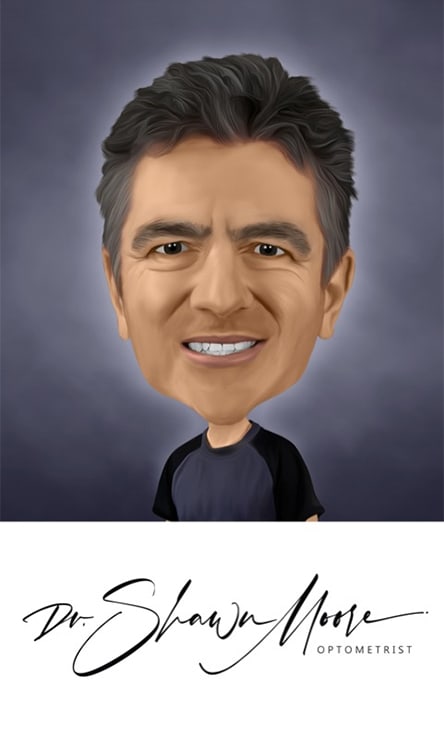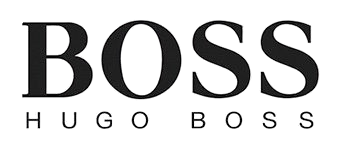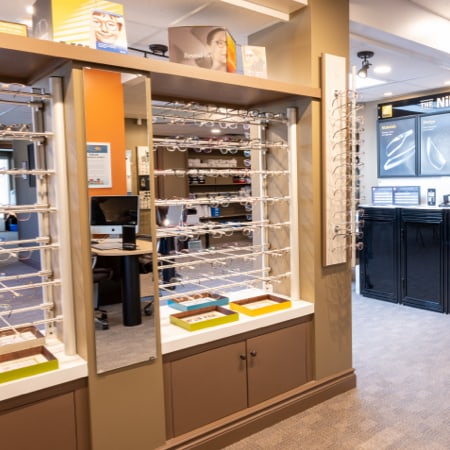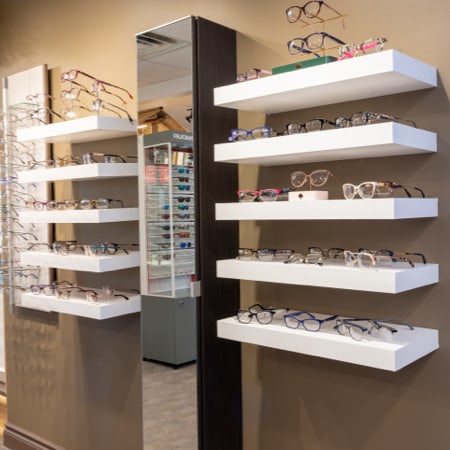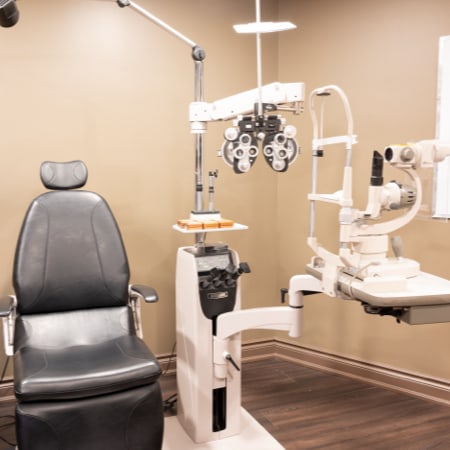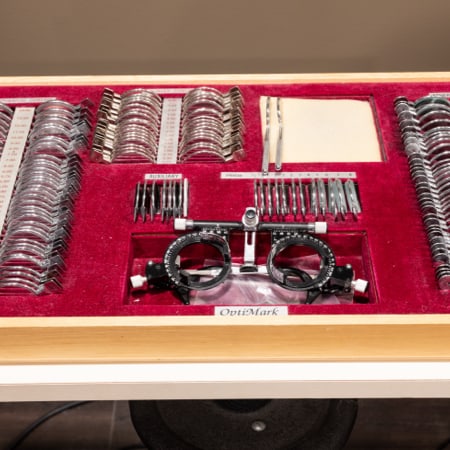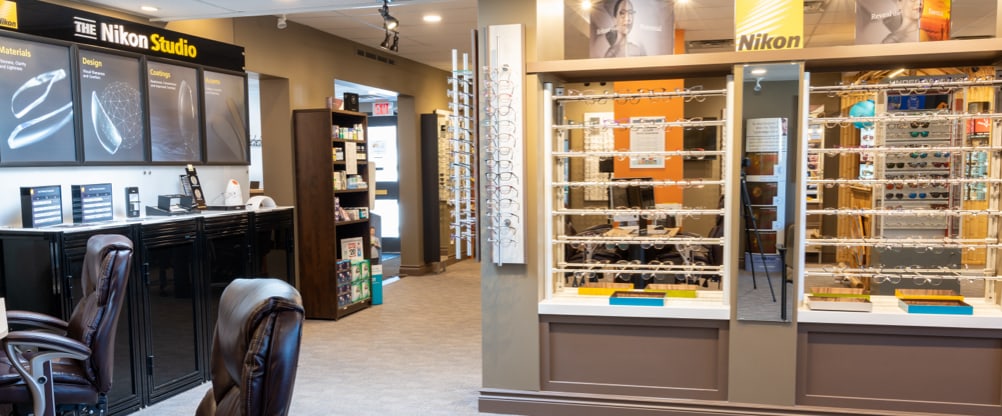Nearsightedness and farsightedness are common refractive errors affecting people of all ages.
Nearsightedness is a condition where a person can see nearby objects clearly, but distant objects appear blurry. Farsightedness is the opposite, where a person can see distant objects clearly, but nearby objects appear blurry. When detected early, myopia control is an effective method to slow the progression of nearsightedness and prevent eye health problems in the long run.
Understanding the differences between nearsightedness and farsightedness can help you determine the treatment or corrective options for your refractive error, and find out if myopia control could benefit you. There are a variety of myopia management methods available that can support your visual health and help protect your eyes from the risks of high myopia.
Difference Between Nearsightedness & Farsightedness
Nearsightedness, or myopia, happens because the eyeball is elongated, causing the light that enters the eye to focus in front of the retina instead of directly on it.
Myopia is usually diagnosed during childhood but can also develop later in life. Wearing corrective lenses or contacts can help correct the issue, as can undergoing LASIK eye surgery.
On the other hand, farsightedness, or hyperopia, happens because the eyeball is much shorter than it should be, or the cornea is flatter than normal, causing the light to focus beyond the retina instead of directly on it.
Farsightedness can manifest as headaches, eye strain, and difficulty seeing up close. People with mild hyperopia can usually get by without glasses or contact lenses, while those with more severe cases may need corrective lenses or refractive surgery to manage their condition.
The Importance of Myopia Control for Refraction Errors
The importance of myopia control treatments for refraction errors is undeniable. By slowing down the progression of myopia, we can work to prevent future eye conditions.
Myopia control is a series of specific tests and treatments designed to slow down the progression of nearsightedness. Testing includes measuring the length of the eye to help evaluate risk and to monitor progression and the success of treatment. Various treatment options can decrease the elongation of the eyeball or manipulate the peripheral defocus in the eyes, leading to a reduction in myopia progression. By controlling myopia, these treatments can help prevent future eye problems and help you maintain healthy vision..
Management Options for Myopia
Myopia control is important, and different treatment options are available to manage this eye condition.
1) Specialty Spectacle Lenses: Glasses are a great option for those interested in traditional vision correction, for patients who are not well-suited for contact lenses, and for those with astigmatism. These lenses alter the focus or contrast of peripheral light rays to slow down the progression of myopia.
2) Multifocal Contact Lenses: multifocal contact lenses with a specific design function in a similar manner to glasses by altering the focus of peripheral light rays to slow down the progression of myopia. If you have myopia and are ready for contact lenses then these are a great option.
3) Atropine Eye Drops: A very weak, safe, concentration of Atropine eye drops has been shown to be effective in controlling myopia. This can be used as a stand alone treatment or combined with other treatments.
4) Orthokeratology (Ortho-K): Ortho-k lenses are hard, gas-permeable contact lenses that gently and temporarily reshape the cornea overnight to improve vision during the day. Special ortho-k lenses shape the cornea to alter the focus of peripheral light rays with similar effect to the above spectacle lenses and contact lenses.

Early Detection of Nearsightedness or Farsightedness
Eye exams are essential for maintaining proper vision care, and can be a key way to detect nearsightedness or farsightedness in children who may not realize they have vision problems.
During a children’s eye exam, an optometrist can examine your child’s eyes to assess their visual acuity, eye movement, and overall health. This way, vision problems can be detected early on and treated to set your child up for success.
It’s especially important to prioritize your child’s vision care, as they may be unable to identify the signs of vision problems themselves. So, how can you tell if your child may have myopia or hyperopia? These behaviours might indicate that your child has vision problems and needs an exam:
- Head tilting
- Trouble in school
- Squinting
- Covering one eye
- Holding items close to the face
Adults also benefit from regular eye exams. As we age, we become more susceptible to age-related vision problems, such as cataracts, glaucoma, and macular degeneration. Regular eye exams can detect these issues early on, allowing prompt treatment and management.
Personalized Myopia Control Treatments & Vision Health Education
Nearsightedness and farsightedness are prevalent refractive errors that can lead to other vision complications in the long-term. These issues can be prevented by seeking vision correction and myopia management options.
Our family-focused, empathetic team at Orillia Optometry is committed to providing a personalized experience for our patients and putting your vision health first. We strive to be honest and upfront with our knowledge so that patients can make informed decisions regarding their vision care. Reach out to us today to book an appointment.


